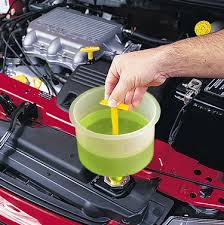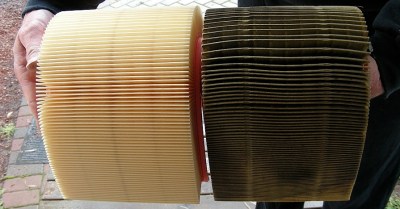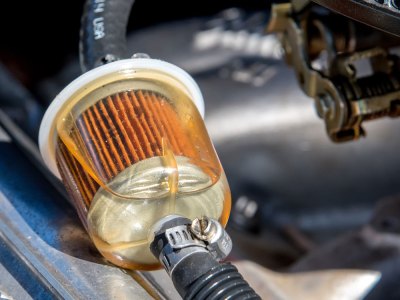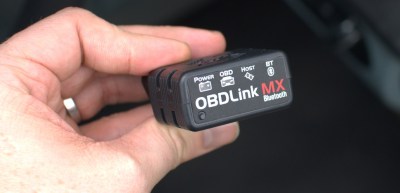So, you’ve decided you want to get into cars. After much research and deliberation, you’ve bought yourself a sweet project car, and can’t wait to get down to work. First things first – it’s time to learn about basic maintenance!
Get It Right For A Good Time
Doing necessary maintenance on time is key to enjoying your project car. Too many gearheads know the pain of a neglected beast that spends more time up on jackstands than out on the road. Buying the right car, and keeping a close eye on what needs to be done, will go a long way to improving your experience and relationship with your ride.
If you’ve just bought a car, no matter how good things look, it’s a good idea to go through things with a fine-tooth comb to make sure everything’s up to scratch. This can avoid expensive damage down the line, and is a great way to get your feet wet if you’re new to working on cars. Here’s a bunch of easy jobs you can tackle as a novice that will keep your ride in tip-top condition.
Fluids
Your car relies on a variety of highly-engineered fluids in order to run smoothly and reliably. Using the right fluids and changing them at regular intervals is important to ensure your car performs well. While the seller may have assured you that everything’s been changed on schedule, the first thing you should be doing when you get your project home is to change the fluids.

Engine oil is perhaps the most important. Over time, contaminants build up in the oil and it begins to lose its effectiveness as a lubricant. Left too long, and your oil pump can clog and you’ll lose oil pressure, destroying your engine in mere seconds. Alternatively, metallic particles can build up as the engine wears, and your oil filter can only do so much. You want to keep your oil fresh and of the appropriate grade, with most manufacturers recommending a set time period or mileage amount to change the oil. This is an easy job on the vast majority of cars, though you might find some difficulty in reaching your oil filter (looking at you, Miata). It’s a great way to get comfortable working on your car – just make sure you put the new oil in before you start the engine, else you’ve almost certainly ruined your ride. You can even send samples of your oil away for analysis that can help diagnose long-term issues. Oh, and be sure to us a new filter every time – and keep an eye out for leaks!

Coolant is also an important fluid to check and change regularly. If it looks rusty and brown, your engine components are corroding and that’s no good for the long time health of your ride. Thankfully, it’s easy to change: most cars having a tap to help dump the coolant before you top it up. If things are particularly dirty, you might want to run a coolant flush solution through the system before you replace the fluid. Just make sure you burp the air out of the system properly before heading out back on the road, lest you overheat your engine.
Other fluids in your car are generally have quite long intervals before service is required. Automatic transmissions often recommend oil changes quite rarely; more than 100,000 km is common. Similar intervals are typical for manual transmissions and differential oil. If you’ve just got the car and it’s shifting and driving well, you’re likely safe to leave these alone. They’re a little more difficult to tackle, usually, so consider approaching these once you’ve gotten a little more comfortable with the wrenches.
Filters
Filters play an important role, ensuring your car doesn’t clog its fuel injectors every time you fill up at a dodgy gas station, or making sure sand doesn’t wreck the cylinder bores. However, they get clogged over time, leading to reduced performance and other niggling issues. Thankfully, they’re often cheap and easy to change, and are easily handled by the shadetree mechanic.

Air filters are the engine’s main protection from dust and particulates. Often made out of paper or foam, they’re usually located in an accessible spot next to or on top of the engine, and a simple visual inspection is usually enough to tell if they need replacement. If they’re dirty or falling apart, swap it out. If it’s covered in oil, you’ll also want a new one, though that ‘s indicative you have other problems. Generally, a high quality OEM filter is the best replacement. There’s little to be gained by swapping to a pod-filter or a cheap eBay intake, unless you really know what you’re doing and are sourcing high quality parts.

Fuel filters are responsible for making sure the tiny passages of your carburetor or injectors don’t get blocked with detritus in fuel. If you’re having strange issues with stumbling or a lack of acceleration, you might find your fuel filter is nearing the end of its life. When they get clogged, fuel pressure drops and this can lead to performance issues. Carbureted cars often have one or more inline filters that can be swapped out with little more than a screwdriver. Fuel injected cars can be a little more complex and often have multiple filters, but they’re still fairly straightforward to change if you know where to look. Their in-tank pumps also have a special filter sock on them, but these usually last as long as the pump and you needn’t worry about them too much.
Wheels and Tires
Ask around the racetrack about how to start making your car faster, and the first thing you’ll get told is “tires, tires, tires”. Your tires are the interface between your car and the road, and no matter what you do to the rest of the car, if you’ve got bad tires, it’ll all be for naught. It’s not just about speed on the track, though – whether you’re driving on the street or off-road, a good set of tires is important to keep your car pointed the right way, and avoid ending upside down in a ditch.

Oftentimes, project cars can come with a mismatched set of wheels and tires, or completely bald rubber. Worst case, you’ve dragged something out of a barn or a field, and it’s sitting on rubber well over 10 years old. Just because they have tread and hold air, doesn’t mean they’re safe to drive on. Rubber doesn’t age well, and unless your new ride has a set of fresh meats with plenty of tread and a current date code, you’ll want to get them replaced.
It’s also important to pay attention to wheel and tire size. Putting huge rims on your car can look cool to some, but it’s often a great way to spoil your handling. There’s no need to stick rigidly to the manufacturer’s standard wheels, of course – these can be ugly and boring, after all. The best way to get the right wheels and tires is to talk to other enthusiasts that have builds similar to what you’re going for. They’ll be able to tell you what works for your car, with your suspension setup, and your intended goals.
For example, the original NA Miata came with 14″ x 5″ wheels. These are fine for getting about town, but for track use, they’re too skinny to generate much grip. It’s also difficult to find good rubber to suit 14″ wheels these days; there are options available, but they’re expensive and obscure. By asking around forums, and chatting to the old hands at the track, I was able to learn that a set of 15″ wheels between 7″-8″ wide would be a good bet, ideally with an offset between +20 and +35 to make sure they nicely filled the guards. Armed with this knowledge, I was able to purchase a set of wheels that looked great and fit properly without needing any wheel spacers or other ugly hacks. Wrapped in some sticky semi-slicks, my lap times dropped by 4 seconds overnight! By doing my research, I got a great result without wasting any time or money.
Fixing Faults
It’s likely that, as you’ve bought a project, your car has a few issues. Maybe it’s got a noisy exhaust, or it’s using more fuel than it should. While these may not get in the way of your car getting from A to B, they can dull your enjoyment significantly, and add to the financial burden of having a project car. However, fixing these issues is a great way to start learning about how your car works!
Diagnosis can be tough for the beginner, particularly when faced with a tricky problem, minimal tools, and limited experience. Many will guess at the cause of the problem, and begin replacing parts only to find the issue reoccurring time and again. Ideally, finding the root cause of an issue is more productive. This is achieved by logically looking at the symptoms, and testing parts and subsystems to see that they are indeed properly operational. This involves learning how to use a multimeter, pressure gauges, and all manner of other equipment. This can be expensive, but can pay off down the road. Oftentimes, it’s important to weigh up buying more tools versus simply taking the car to a shop that already has the gear.

The one tool that any wrencher should have for working on OBD-II equipped cars is the scantool. This plugs into the diagnostic port in post-1996 vehicles, and allows the ECU to communicate fault codes to the driver. This is helpful in a wide variety of situations. For example, if your fuel economy is poor, and your scantool reports a bad oxygen sensor signal, it’s simple to replace the part and get things up and running again. Other problems, like misfires, can be more difficult to diagnose, but a scantool still helps point you in the right direction.
Thankfully, many parts of the car community are eager to share their knowledge and passion with those eager to learn. Facebook groups, forums, and similar gatherings are great places to look for help. Often, your problem will have been faced by many before, and simply putting the symptoms into Google will net the answers you need. Else, reach out, and start a conversation with those that may be able to help. Finding a good local mechanic can also be helpful. While many shops simply exist to get cars in and out the door, others often specialize in certain makes and models and are willing to work with enthusiasts who need a little help on their journey toward working on their car. I’ve been lucky myself to know several great mechanics, who were able to step in and solve a couple of sticky issues that were just outside of my own abilities to solve. After picking up the car, I’ve learned a lot from a quick chat about what they had to do to fix the problem!
It’s a Marathon, Not A Sprint
For the newly initiated into the automotive hobby, it can sometimes feel like too much. If you’ve just started poking around under the hood of your new ride and found a mess of wires, bodged hoses and a forest of zipties, you might be a little overwhelmed. However, through regular maintenance, consultation with those in the know and a little perseverance, you can learn a lot and build yourself a sweet ride along the way. Happy hacking!
No comments:
Post a Comment